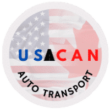Cross-border vehicle shipping between Canada and the United States continues to be a major part of the automotive and transport industries. As we enter 2025, updated regulations, documentation requirements, and compliance standards make it even more important to understand the vehicle import and export process. Whether you’re a dealer, individual, or business, this comprehensive guide will walk you through everything you need to know to stay legal and efficient when transporting vehicles across the border.
Importing a Vehicle into the USA in 2025
Bringing a vehicle into the United States from Canada or elsewhere requires following strict customs and federal regulations. Here’s a step-by-step breakdown to help you avoid delays and penalties.
U.S. Customs and Border Protection (CBP) Requirements
Before a vehicle enters the country, it must be cleared through U.S. Customs. You’ll need to submit several documents, including:
- Bill of sale
- Vehicle title or proof of ownership
- DOT Form HS-7 (Declaration of compliance with safety standards)
- EPA Form 3520-1 (Declaration of compliance with emission standards)
Vehicles that don’t meet U.S. safety or emission standards may need modifications or could be ineligible for import.
Import Fees and Duties
Depending on the vehicle’s origin and value, import duties may apply. These range from 2.5% to 25%, with trucks often taxed higher than passenger vehicles. Vehicles from NAFTA/USMCA-compliant manufacturers may benefit from reduced or zero tariffs.
Timing and Process
Plan at least 72 hours before crossing the border to notify the port of entry. After inspection, most vehicles are cleared within a day or two if all documents are in order.
Importing a Vehicle into Canada in 2025
Canada’s process is equally detailed and governed by both Transport Canada and the Canada Border Services Agency (CBSA). If you’re shipping from the U.S., here’s what to prepare.
RIV Program (Registrar of Imported Vehicles)
Most U.S.-origin vehicles must be processed through the RIV. This program ensures your vehicle complies with Canadian safety regulations.
Key Documents Needed:
- Original title/registration
- Bill of sale
- Recall clearance letter from the manufacturer
- Form 1 (Canada Customs Vehicle Import Form)
After entry, you have 45 days to make any required modifications and complete a final RIV inspection.
Taxes and Duties
Imported vehicles are subject to GST (Goods and Services Tax), PST (Provincial Sales Tax), or HST (Harmonized Sales Tax), depending on the province. There may also be air conditioning tax and green levies on gas-guzzling vehicles.
Non-Compliant Vehicles
Vehicles that do not meet Canadian standards cannot be imported, with very few exceptions (e.g., 15-year-old classics). It’s critical to check compliance before initiating the process.
2025 Legal Compliance Updates: What’s New?
Several important updates are in effect for 2025 that impact both importers and exporters:
- Digital Portals: Both CBP and CBSA now favor digital document submissions. Paper forms are still accepted but may lead to processing delays.
- Emission Standards Tightened: Stricter EPA and Transport Canada rules apply for newer vehicles. Ensure up-to-date compliance certificates.
- Border Wait Times and AI Monitoring: Enhanced monitoring tools and AI-assisted inspections may speed up or slow down clearance depending on volume and accuracy of your paperwork.
Exporting Vehicles from the USA to Canada (and Vice Versa)

Vehicle export also involves customs procedures and proper documentation. Here’s what you need to know:
For U.S. Exports to Canada
- Title must be submitted to U.S. Customs 72 hours in advance.
- Proof of sale and ID required.
- Vehicle must be physically presented at the port for verification.
For Canadian Exports to the USA
- Submit ownership documents to U.S. CBP.
- EPA and DOT clearance required (even for temporary imports).
- Ensure full documentation to avoid denial at the border.
In both directions, working with an experienced auto transport provider can help reduce costly delays and prevent rejected entries.
Tips for Smooth Cross-Border Vehicle Shipping in 2025
Cross-border vehicle shipping doesn’t have to be stressful. Here are some tips to make the process seamless:
- Double-check eligibility: Ensure your vehicle is eligible for import before initiating the process.
- Get insurance coverage: Protect your vehicle during transport.
- Partner with experts: Use licensed transport services like US Canada Auto Transport.
- Digitize everything: Save time by uploading digital versions of all required documents.
- Stay informed: Laws and tariffs can change rapidly—check for updates before you ship.
Get Expert Help for Hassle-Free Vehicle Transport
Shipping a vehicle between Canada and the U.S. in 2025 requires careful preparation, updated knowledge of legal requirements, and accurate paperwork. Whether you’re importing a personal car, exporting a fleet, or transporting a newly purchased vehicle, one mistake can lead to costly delays.
Let US Canada Auto Transport take care of the hard part. With our expertise and proven track record, we’ll make sure your cross-border shipping process is smooth, compliant, and efficient.
Ready to import or export a vehicle in 2025?
Contact US Canada Auto Transport today for a free quote and expert support!


